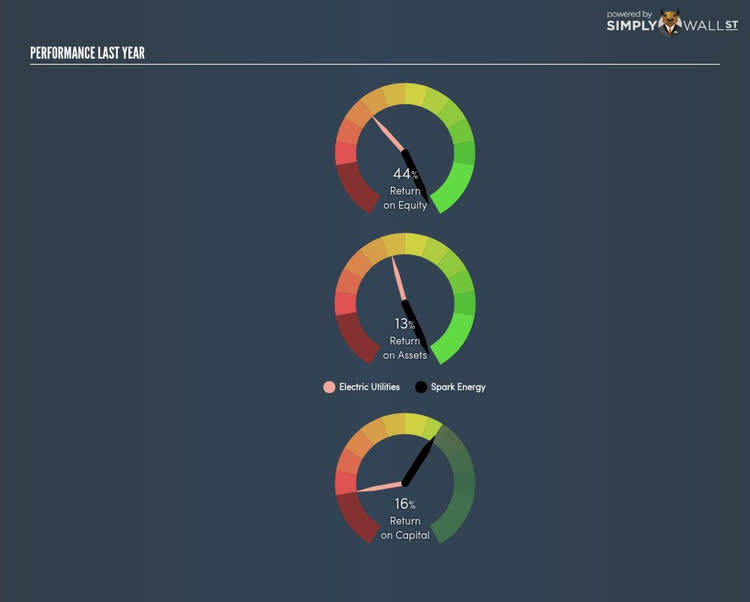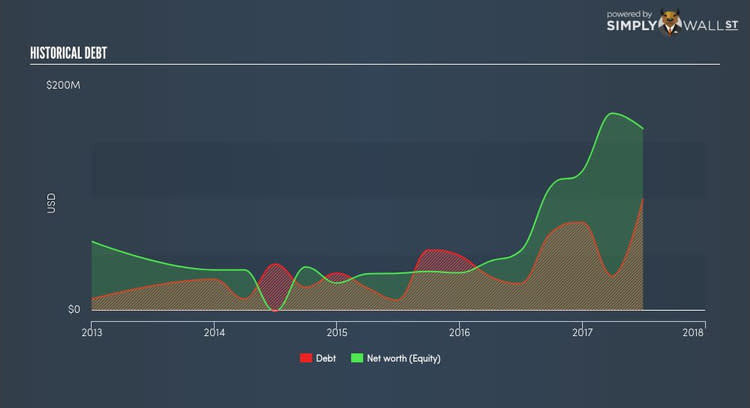How Spark Energy Inc (SPKE) Delivered A Better ROE Than Its Industry

Spark Energy Inc (NASDAQ:SPKE) outperformed the Electric Utilities industry on the basis of its ROE – producing a higher 43.56% relative to the peer average of 9.33% over the past 12 months. Superficially, this looks great since we know that SPKE has generated big profits with little equity capital; however, ROE doesn’t tell us how much SPKE has borrowed in debt. We’ll take a closer look today at factors like financial leverage to determine whether SPKE’s ROE is actually sustainable. See our latest analysis for SPKE
Peeling the layers of ROE – trisecting a company’s profitability
Return on Equity (ROE) is a measure of SPKE’s profit relative to its shareholders’ equity. An ROE of 43.56% implies $0.44 returned on every $1 invested. Generally speaking, a higher ROE is preferred; however, there are other factors we must also consider before making any conclusions.
Return on Equity = Net Profit ÷ Shareholders Equity
ROE is assessed against cost of equity, which is measured using the Capital Asset Pricing Model (CAPM) – but let’s not dive into the details of that today. For now, let’s just look at the cost of equity number for SPKE, which is 8.49%. Given a positive discrepancy of 35.06% between return and cost, this indicates that SPKE pays less for its capital than what it generates in return, which is a sign of capital efficiency. ROE can be split up into three useful ratios: net profit margin, asset turnover, and financial leverage. This is called the Dupont Formula:
Dupont Formula
ROE = profit margin × asset turnover × financial leverage
ROE = (annual net profit ÷ sales) × (sales ÷ assets) × (assets ÷ shareholders’ equity)
ROE = annual net profit ÷ shareholders’ equity
Basically, profit margin measures how much of revenue trickles down into earnings which illustrates how efficient SPKE is with its cost management. The other component, asset turnover, illustrates how much revenue SPKE can make from its asset base. The most interesting ratio, and reflective of sustainability of its ROE, is financial leverage. Since ROE can be artificially increased through excessive borrowing, we should check SPKE’s historic debt-to-equity ratio. At 61.19%, SPKE’s debt-to-equity ratio appears sensible and indicates the above-average ROE is generated from its capacity to increase profit without a large debt burden.
What this means for you:
Are you a shareholder? SPKE’s ROE is impressive relative to the industry average and also covers its cost of equity. Since ROE is not inflated by excessive debt, it might be a good time to add more of SPKE to your portfolio if your personal research is confirming what the ROE is telling you. If you're looking for new ideas for high-returning stocks, you should take a look at our free platform to see the list of stocks with Return on Equity over 20%.
Are you a potential investor? If you are considering investing in SPKE, looking at ROE on its own is not enough to make a well-informed decision. I recommend you do additional fundamental analysis by looking through our most recent infographic report on Spark Energy to help you make a more informed investment decision.
To help readers see pass the short term volatility of the financial market, we aim to bring you a long-term focused research analysis purely driven by fundamental data. Note that our analysis does not factor in the latest price sensitive company announcements.
The author is an independent contributor and at the time of publication had no position in the stocks mentioned.


